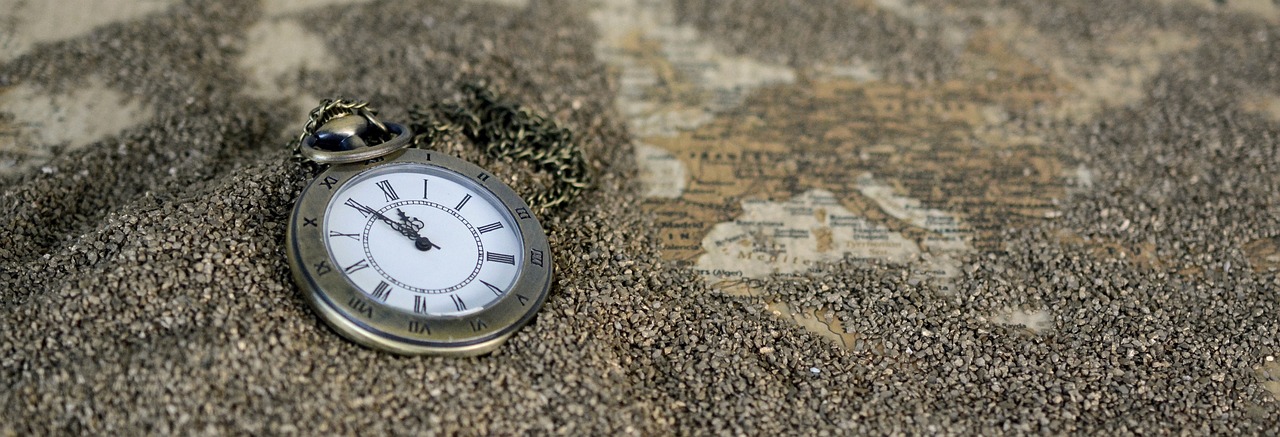The Golden Era of Bread: How 1960s Prices Shaped Our Daily Lives

Understanding the Landscape of the 1960s
The 1960s was a decade marked by significant social changes, technological advancements, and economic shifts. But amidst all this transformation, one staple remained constant on our tables: bread. As we take a moment to reflect on this familiar item, let’s explore how the price of a loaf of bread during this era influenced our daily lives and our family gatherings.
What Did Bread Cost in the 1960s?
To truly appreciate the significance of bread prices in the 1960s, let’s look at some historical data:
| Year | Average Price of a Loaf of Bread | Equivalent Today (Approx.) |
|---|---|---|
| 1960 | $0.18 | $1.75 |
| 1965 | $0.22 | $1.95 |
| 1969 | $0.25 | $2.00 |
The price of a loaf of bread in 1960 was just $0.18, which translates to approximately $1.75 today. By 1969, this price had increased to $0.25, still a bargain in comparison to today’s costs.
The Role of Bread in Daily Life
Consider how bread served more than just a dietary need:
- Family Meals: Bread was at the center of almost every meal, from hearty sandwiches to side dishes.
- Social Gatherings: It was a staple at picnics, parties, and family gatherings, fostering a sense of community.
- Nutrition: Bread was a primary source of carbohydrates, essential for energy during a time when manual labor was more common.
How Prices Affected Households
With the average loaf of bread costing only a few cents, families were able to allocate their budgets more freely. Let’s take a look at how this impacted households:
- Affordability: Bread was affordable for most families, regardless of income, allowing for regular purchases without significant strain on the budget.
- Innovation in Recipes: With bread being so accessible, families often experimented with various recipes, creating delightful meals.
- Economic Stability: The stable price of bread reflected broader economic conditions, providing a sense of security during turbulent times.
Reflecting on the Past
As we reminisce about the 1960s, it is evident that the low cost of bread significantly shaped family life and social interactions. The simplicity of a loaf of bread connects generations, reminding us of shared meals and cherished moments.
Final Thoughts
In conclusion, the price of a loaf of bread during the golden era of the 1960s was not just a number, but a reflection of our lifestyle, values, and community spirit. As we move forward, let us carry forward the lessons learned from those days, appreciating the small things that bring us together.
Baking Memories: A Nostalgic Look at Bread Prices in the Swinging Sixties

Imagine walking into a local bakery in the 1960s, the warm aroma of freshly baked bread filling the air. The sight of golden loaves, crusty on the outside and soft on the inside, brings back memories of simpler times. Let’s take a moment to reflect on the cost of a loaf of bread during this vibrant decade.
The Price of Bread in the 1960s
In the 1960s, bread was a staple in every household. The typical price for a loaf of white bread ranged from 20 to 25 cents. This may seem astonishing today, but back then, it was a vital part of daily life.
Comparing Prices Over the Decades
To truly appreciate the value of bread in the 1960s, let’s look at how prices have changed over the decades:
| Year | Price of a Loaf of Bread |
|---|---|
| 1960 | $0.20 |
| 1970 | $0.25 |
| 1980 | $0.50 |
| 1990 | $1.00 |
| 2000 | $1.50 |
| 2020 | $2.50 |
What Made Bread Special in the 1960s?
- Home Baking: Many families baked their own bread, and the process was often a cherished family activity.
- Variety: The 1960s saw the introduction of various types of bread, including whole grain and specialty loaves.
- Community: Local bakeries were social hubs, fostering community spirit as residents gathered to chat and share news.
Interactive Reflection
Now, let’s take a moment to engage with those memories. Think back to the bread you enjoyed in your youth:
- What was your favorite type of bread?
- Did you have a special recipe that was passed down in your family?
- Can you recall the smell of bread baking in your home?
Share your stories with friends and family, and keep the nostalgia alive!
The price of a loaf of bread in the 1960s is not just a figure; it represents memories, family traditions, and a sense of community. As we reflect on these times, let’s celebrate the simple joys that bread has brought into our lives.
From Dimes to Dollars: The Economic Journey of a Simple Loaf

Can you recall the days when a simple loaf of bread cost only 20 cents? In the 1960s, bread was a staple in every household, and its price reflected the economic landscape of the time. With just a few dimes, families could fill their tables and nourish their loved ones.
Understanding the Value of Money
In 1960, the average price of a loaf of bread was roughly $0.20. But what did that mean for families? Imagine heading to the store with a few coins in your pocket and walking out with a loaf that could feed the entire family. This was the reality for many during that era.
Comparing Costs Over Time
Fast forward to today, and the average price of a loaf of bread hovers around $2.50 to $4.00. How did we go from dimes to dollars? Let’s dive deeper:
Inflation: Over the decades, inflation has caused the value of money to decrease significantly. What once cost a quarter now requires several dollars.
Economic Changes: The economic landscape has shifted from post-war prosperity to varying recessions and booms, impacting food prices.
Production Costs: Advances in technology and changes in farming practices have altered how bread is produced and priced.
It’s fascinating to see how something as simple as a loaf of bread can illustrate the broader economic changes over decades. Have you ever thought about how much you paid for bread when you were raising your family? What was your favorite type of bread back then?
Engaging with Today’s Prices
Now, let’s make it interactive! Compare your memories with today’s prices:
What did you pay for a loaf of bread in your youth? Share your stories!
How has inflation affected your grocery shopping? Reflect on the changes you’ve observed.
The journey of a loaf of bread from 20 cents to $2.50+ is not just about numbers; it’s a reflection of our changing world. Let’s cherish those memories while navigating the present.
Loafing Around: Discovering the Unexpected Value of Bread in the 1960s
Have you ever stopped to think about how much a simple loaf of bread has changed over the decades? In the 1960s, bread was more than just a staple; it was a reflection of the times, a symbol of home, and an integral part of daily life. Let’s take a nostalgic journey back to the 1960s and explore the surprising cost and value of bread during that era.
In the 1960s, the price of a loaf of bread was remarkably low by today’s standards. Here’s a quick snapshot of bread prices throughout the decade:
| Year | Price of a Loaf of Bread |
|---|---|
| 1960 | $0.18 |
| 1965 | $0.20 |
| 1969 | $0.24 |
Can you believe it? Just a few cents for a loaf of bread!
The Value of Bread Beyond Cost
While the price of bread was low, its value extended far beyond mere economics. Here are a few reasons why bread held such importance in the 1960s:
- Family Gatherings: Bread was often the centerpiece of family meals, bringing loved ones together.
- Cultural Significance: Different types of bread represented various cultures and communities, enriching the American culinary landscape.
- Economic Indicator: The cost of bread often reflected the overall economic health of the country.
Interactive Reflection: Your Bread Memories
Let’s take a moment to reflect. Think back to your own experiences with bread in the 1960s. Did your family have a favorite type of bread? Perhaps it was fresh from the bakery or homemade. Share your memories:
- What was your favorite kind of bread?
- Did you have a special recipe that was passed down through generations?
- How did bread play a role in your family gatherings?
The Evolution of Bread Prices
As we moved through the decades, the price of bread continued to rise. Let’s take a look at how inflation has impacted bread prices:
| Decade | Average Price of Bread |
|---|---|
| 1970s | $0.30 |
| 1980s | $0.50 |
| 1990s | $1.00 |
| 2000s | $1.50 |
| 2020s | $2.50 |
Notice the trend? The cost of bread has multiplied over the years, but its significance remains timeless.
As we conclude our journey through the 1960s, it’s evident that a loaf of bread is much more than just a grocery item. It holds memories, traditions, and a connection to our past. So next time you enjoy a slice, remember the rich history it carries. What will you bake or share today in honor of those cherished memories?
Yeast and Wealth: Unpacking the Surprising Cost of Bread in the Past
Understanding the Context
In the 1960s, the world was a different place, and so were the prices of everyday items. Bread, a staple in many households, was not just a food item; it was a reflection of the economic conditions, societal norms, and the lifestyle of the era. Let’s take a stroll down memory lane and explore how much a loaf of bread cost back then.
In the early 1960s, the average cost of a loaf of bread in the United States was around $0.20. Can you believe that? In comparison to today’s prices, it seems almost unbelievable!
Factors Influencing Bread Prices
Several factors contributed to the cost of bread during this time:
Production Costs: The cost of wheat, sugar, and yeast played a significant role in determining bread prices.
Inflation: The economic climate and inflation rates affected purchasing power.
Supply and Demand: The balance between how much bread was produced and how much was consumed impacted prices.
Table: A Comparison of Bread Prices
| Year | Price of Bread |
|---|---|
| 1960 | $0.20 |
| 1970 | $0.25 |
| 1980 | $0.50 |
What Could You Buy with a Loaf of Bread?
Imagine the shopping possibilities back then! With a loaf of bread costing just $0.20, you could purchase:
A dozen eggs for around $0.60
A gallon of milk for about $0.95
A newspaper for $0.10
Social Impact of Bread Prices
The affordability of bread had a profound effect on families. During the 1960s, many families relied on bread as a primary source of sustenance, leading to its significant role in family meals and gatherings.
Reflecting on Changes
As we reflect on the past, consider how the evolution of bread prices correlates with broader economic changes. In today’s world, the average price of bread is significantly higher, but the memories of simpler times remain treasured.
